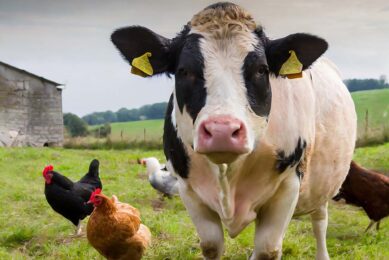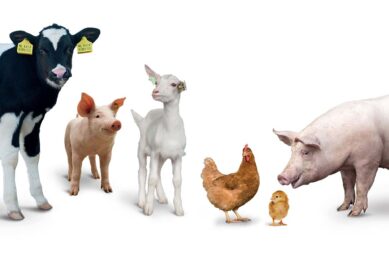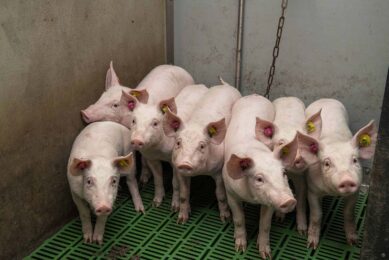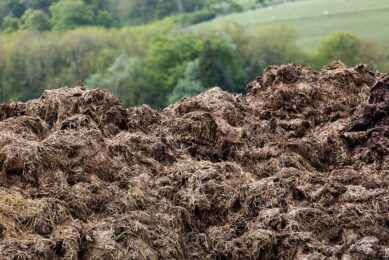Lysophospholipid supplementation for gut health
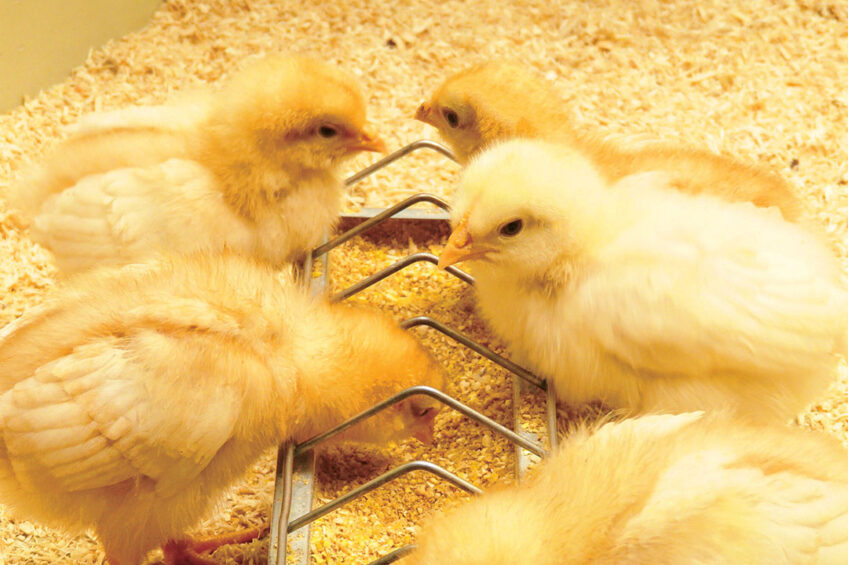
Dietary supply of lysophospholipids (LPL), which naturally occur in cell membranes at 0.5-6%, has been shown to improve nutrient absorption in the small intestine, improve gut health, support intestinal development including tight junctions and reduce free/excess nitrogen.
Following the ban on antibiotic growth promoters (AGPs) plus the move to reduce the use of other antibiotic products, the feed industry has continued to research alternatives coupled with other strategies, including higher welfare standards, to optimise livestock performance. There has been a year-on-year reduction in the amount of antibiotics used. This reduction has been accompanied by a multi-pronged approach including reviews of farm management and feed strategies, for example. The initial alternatives included organic acids, pre and probiotics and Medium Chain Fatty Acids (MCFA’s), which gave an excellent base to where we are today. The target for additional reductions by 2024, however, will require further investigations.
Research on lysophospholipids
Pathway Intermediates R&D team have been researching the use of lysophospholipids in animal feed, publishing 18 articles focussing on broilers alone. One recent study into dietary supplementation up to 0.075% LPL has been shown to improve a wide range of gut health parameters. For example, an increase in small intestine nutrient absorption: this included a 5% increase in nitrogen uptake (Crude Protein CP and Amino Acid AA) leading to a reduced nitrogen output. This improved absorption was confirmed from the positive changes in the intestinal wall structure: improved villi height and crypt depth. The thinning of the mucosal layer also adds to the improved absorption plus is an indicator of a positive impact on gut health: a change in microbial levels and/or populations.
A recent study at the University of Georgia, USA, investigated Pathway Intermediates lysophospholipid product. The investigation used lysophospholipid dietary levels of control (0%), 0.025%, 0.05% and 0.075% LPL supplementation. The assessment was carried out with 960 Cobb 500 male birds: day-old to 41 days of age. This study is an example of our routine R&D programme.
The investigation was a 2×4 factorial design, with 2 energy levels positive control (industry guidelines (PC)) and negative control (lower energy -100kcals (NC)) plus 4 concentrations of LPLs. The data covered bird performance, carcass yield, tight junction proteins, bone ash and Intestinal histology.
Overall performance
The feeding of a reduced energy diet might be expected to result in a higher feed intake and slower growth rate from day old through to slaughter. A positive correlation, however, between energy level and LPL supplementation was observed on body weight gain (p<0.0378) and feed intake (p<0.0058) over the trial period (Table 1).
Tight junctions
Tight junctions are usually ignored outside of the first 12 hours of life, perhaps except for issues with leaky gut syndrome. Their strength is often taken as an indicator of ideal intestinal wall structure and gut health.
An assessment of tight junctions was carried out on day 7 and 21. Claudin-3 protein is a universal tight junction protein and is considered a marker for determining tight junction integrity. The LPL supplementation at 0.05% and 0.075% significantly (p<0.05) increased claudin-3 protein expression in the duodenum compared with the other treatments at both energy levels. This positive effect at both energy levels is encouraging if birds are under nutritional intestinal stress.
Intestinal morphology
Changes in villi height and crypt depth are common factors used in determining the effectiveness of a product on diet digestibility and absorption. Stunting of villi in the early stages of growth have been reported to decrease overall performance through reduced absorption.
An assessment on day seven indicated that supplementation with LPL at 0.05% and 0.075% significantly increased (p<0.05) villi height compared with the other treatments, at both energy levels. An increased villus to crypt ratio is correlated with an improvement in the level of digestion and absorption of nutrients. This combined with increased intestinal strength and health provide a positive step in animal health.
Improved absorption and intestinal structure
In conclusion, the supplementation with LPL, has been shown to support a healthy digestive system statistically at both 0.05% and 0.075% dietary inclusion. The positive change in digestion and gut health was a combination of different effects across both energy levels. The increase in villi height would offer an insight into improved absorption. In addition, the changes to the intestinal walls would further improve digestion and absorption. Furthermore, the increase in claudin-3 protein levels would be an indicator of a more stable gut integrity, even at reduced dietary energy levels. The improved absorption and intestinal structure/integrity led to the expected improvements in performance: body weight gain and a comparable feed conversion ratio.
Pathway Intermediates R&D is continuing to confirm that supplementation of broiler diets with lysophospholipids is a valuable addition to maintain performance and gut health within the increasing requirement to find ideal cost-effective alternatives to antibiotics.



